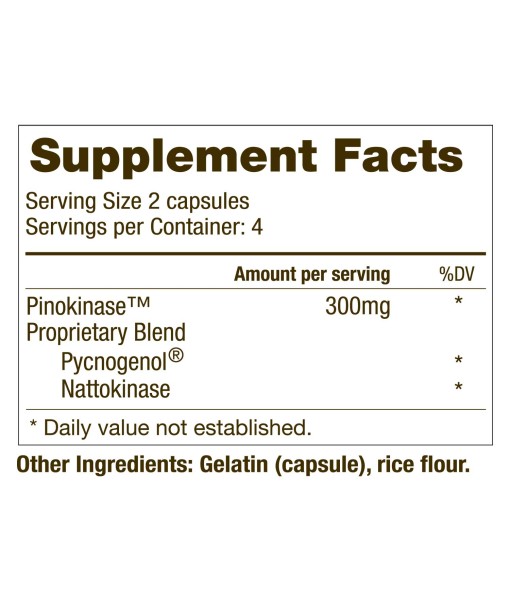

Flite Tabs 8 Capsules
Please login or create an account to purchase products
Swelling in the legs and feet is a common problem on airplane flights. In a randomized, controlled study of subjects on international long-haul flights, Flite Tabs significantly promoted vein health and reduced leg swelling. Flite Tabs contain an all-natural mixture made from fermented soy and pine bark extract.
- Description
Description
Flite Tabs is for deep vein health and reduction of swelling during long-term airplane flights.†
In a randomized, controlled study of subjects on international long-haul flights, Flite Tabs significantly promoted vein health and reduction of leg swelling. One bottle contains eight capsules; four for the first flight and four for the return flight.1 Vein Caps, a similar product, provides more capsules at a less potent dose intended for daily use.
Caution: Not intended for use by pregnant or lactating women. Do not take excessive amounts. If you have a history of blood clotting or bleeding problems do not use this product without first consulting your doctor.
†The statements above have not been evaluated by the FDA. This product is not intended to diagnose, treat, cure, or prevent any disease and results may vary.
Research on Flite Tabs
Clinical Trial on Flite Tabs
Prevention of Venous Thrombosis in Long-Haul Flights with Flite Tabs: The LONFLIT-FLITE Randomized, Controlled Trial
Angiology. 2003 Sep-Oct;54(5):531-9. Cesarone MR, Belcaro G, Nicolaides AN, Ricci A, Geroulakos G, Ippolito E, Brandolini R, Vinciguerra G, Dugall M, Griffin M, Ruffini I, Acerbi G, Corsi M, Riordan NH, Stuard S, Bavera P, Di Renzo A, Kenyon J, Errichi BM.
ABSTRACT: The aim of this study was to evaluate the development of edema, and superficial and deep vein thrombosis (DVT) prophylaxis with an oral profibrinolytic agent (Flite Tabs, 150 mg pinokinase, Aidan, Tempe, AZ, USA) in long-haul flights (7-8 hours), in high-risk subjects. A group of 300 subjects was included; 76 were excluded for several problems including concomitant treatments; 204 were randomized into 2 groups (active treatment or placebo) to evaluate the effects of prophylaxis with Flite Tabs. An exercise program was used in both groups. The femoral, popliteal, tibial, and superficial veins were scanned with ultrasound before and within 90 minutes after flights. Of the included subjects, 92 of 103 controls and 94 of 101 treated subjects completed the study. Dropouts were due to connection problems. Age, gender, and risk distribution were comparable in the groups. In the treatment group, no DVT was observed. In the control group, 5 subjects (5.4%) had a DVT and there were 2 superficial thromboses (7 events in 92 subjects; 7.6%). At inclusion, edema was comparable in the 2 groups. After flights there was an increase in score in controls (+12%) in comparison with a decrease (-15%) in the Flite Tabs group (the difference in variation was statistically significant). Intention-to-treat analysis for thrombotic events shows 18 failures in controls (11 lost to follow-up + 7 thrombotic events) of 92 subjects (19.6%) in comparison with 7 failures (of 94 subjects, equivalent to 7.4%) in the treatment group (p < 0.05). Events were asymptomatic. In conclusion, Flite Tabs were effective in reducing thrombotic events and in controlling edema in high-risk subjects in long flights.





